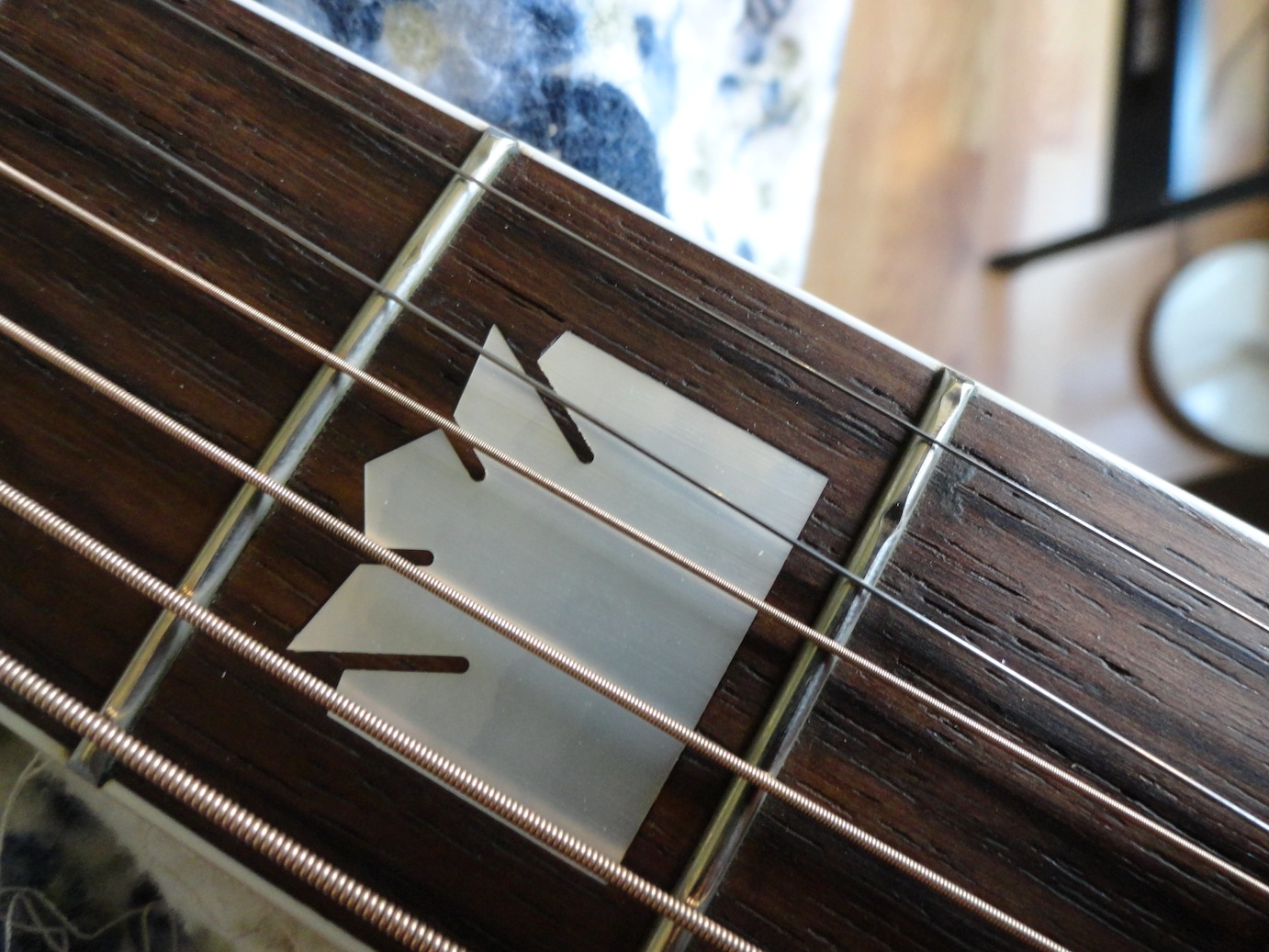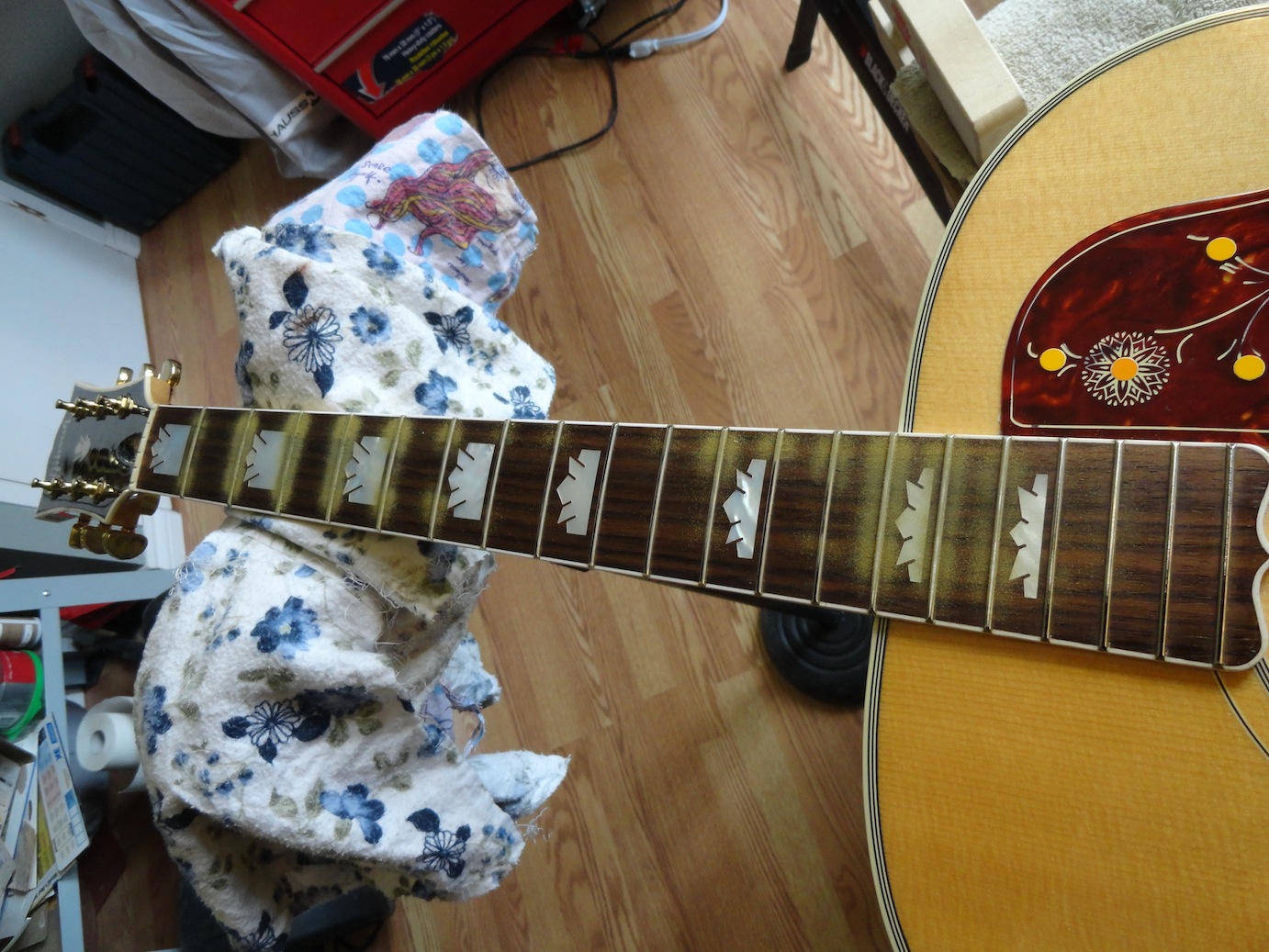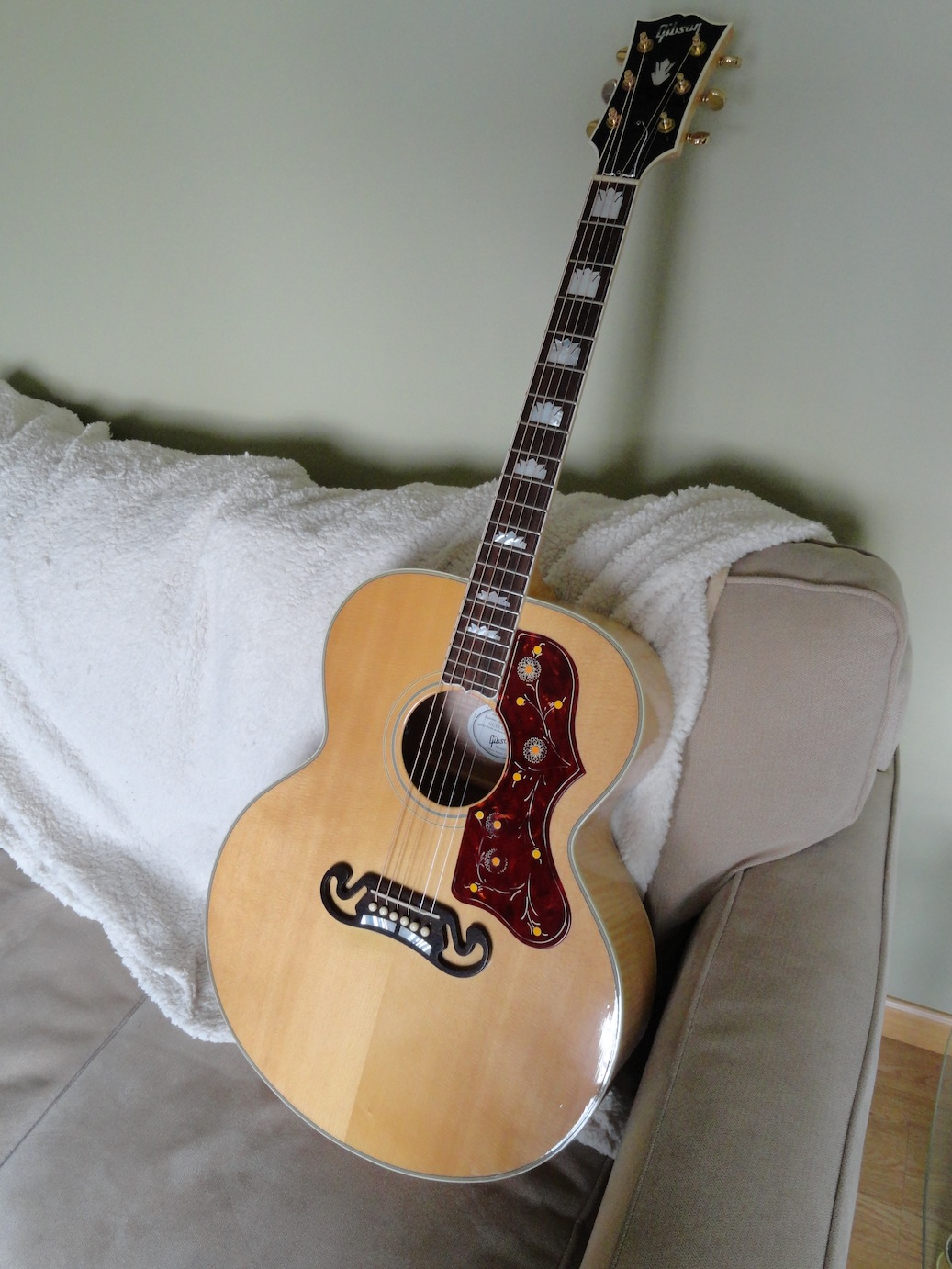- Details
- Hits: 7945
Gibson J-200
Hello everyone,
Well, it's been a Gibson kinda week. First, I had to to some fretwork and a setup on a 2007 Gibson J-200, and then, I had to fix a broken truss rod on a 1969 Gison EBO-L. But lets start with the fabulous J-200. Her owner wanted the action lowered, and the frets were worn from 5 years of playing, so a fret job was in order.
 You can see in this picture the notches that the strings have made over time. This happens on all steel strung instruments, regardless of the make. You can slow down the rate of the wear by having stainless steel frets, but it will still happen, and the sound of the instrument will be greatly affected. Simply changing the fret size affects how a guitar sounds, so changing the
You can see in this picture the notches that the strings have made over time. This happens on all steel strung instruments, regardless of the make. You can slow down the rate of the wear by having stainless steel frets, but it will still happen, and the sound of the instrument will be greatly affected. Simply changing the fret size affects how a guitar sounds, so changing the
material is even more noticable.
Now, wood moves over time. It does settle at some point, but this instrument was made in 2007, and 5 years of string tension and weather variations have made it settle with a bit of an odd bow. Sometime, this can be fixed with a simple fret job, as it was in this case, and sometimes, you have to refret the instrument and level the fingerboard. Now, this is only necessary on rare occations. This Gibson did move a lot, and after 5 years, it can expected that it has now settled. The truss rod will still need to be adjusted once or twice a year, because this is Canada, and humidity varies greatly between winter and summer, mostly because of heating.
You can see from the pictures what I mean. Without any string tension, the truss rod would only make a string ridge between the 3rd and 7th fret. So, I had to place it in such a way that I would be touching a maximum of frets on the first pass with the straight edge. Notice how you can see that less material has been removed on the first and second frets after a few passes, and that no material has been removed between the 7th and 11th frets on the bass side of the fingerboard. In revision, this wasn't a difficult fret job, since I have done so many and have the experience required to do it right, even whan the neck isn't absolutely perfect. But this is the type of fob that a less experienced shop could have accidently botched.
3rd and 7th fret. So, I had to place it in such a way that I would be touching a maximum of frets on the first pass with the straight edge. Notice how you can see that less material has been removed on the first and second frets after a few passes, and that no material has been removed between the 7th and 11th frets on the bass side of the fingerboard. In revision, this wasn't a difficult fret job, since I have done so many and have the experience required to do it right, even whan the neck isn't absolutely perfect. But this is the type of fob that a less experienced shop could have accidently botched.
Once that was done, the usual crowning and polishing was accomplished, followed by a precision setup. She is now ready to rock!


